Low-income Americans have been hit hard by both health and economic impacts of COVID-19, but it’s their economic needs that seem to take priority.
Economic needs trump COVID needs in high poverty ZIP codes
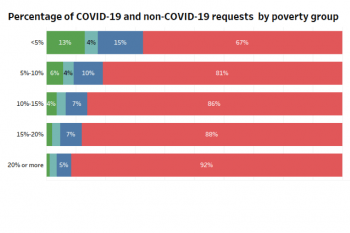

Low-income Americans have been hit hard by both health and economic impacts of COVID-19, but it’s their economic needs that seem to take priority.
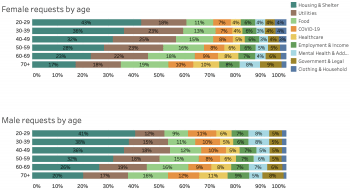
COVID-19 has younger Americans seeking help with housing while older adults are looking for food assistance. Regardless of age, women more likely than men to seek help with housing, food and utility payments.

Although urban centers generate the lion’s share of 2-1-1 requests, calls from less populous counties are increasing faster. From July to August, requests to 2-1-1 from metropolitan counties increased by 6%. During same time period, requests to 2-1-1 from micropolitan counties increased by 9.2% and other, more rural and less populous counties increased by 9.4%.
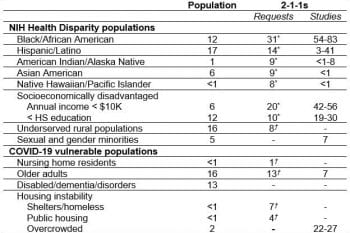
When you compare 2-1-1 callers in the U.S. to populations that the U.S. government has designated as health priorities, it is abundantly clear that 2-1-1s serve virtually every single group. These data provide more evidence for why 2-1-1s should be at the heart of public health efforts to address COVID-19.

2-1-1s serving as the primary COVID-19 helpline in their service area appear to be reaching a broader cross-section of Americans. One explanation is that by virtue of their increased visibility in responding to COVID-19, 2-1-1s in the former group are reaching a more diverse group of callers, who are – in every poverty-level category – more likely to be seeking COVID-19 information.
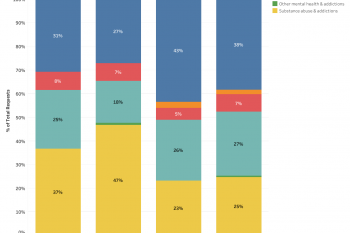
How do men and women differ in their mental health requests to 2-1-1 during the COVID-19 pandemic, and do differences vary further by age? To explore these questions in a preliminary way, we analyzed 768 mental health requests to 2-1-1 from five counties in Ohio.

Daily calls about COVID-19 to 2-1-1 in Washington are rising fast, driven largely by areas of the state with large Hispanic populations. With the pandemic entering its fifth month, COVID-19 requests in Washington have shifted dramatically from population centers near Seattle to south central Washington, a region with the largest proportional Hispanic population in the state.

Younger and older callers are equally likely to seek COVID-19 information and help paying electric bills when they call 2-1-1, but for many other needs, requests vary widely by age.
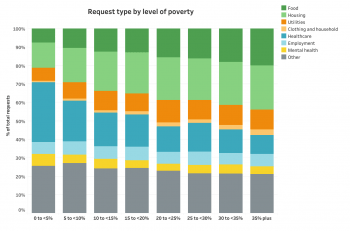
Since COVID-19, people in high-poverty neighborhoods are more likely to call 2-1-1 seeking help with food and housing while those from low-poverty neighborhoods are more likely to call about healthcare, which includes information about COVID risks, protections, symptoms and testing.

In an earlier report, we noticed that food requests to 2-1-1s from low-poverty ZIP codes had larger percentage increases from pre- to post-COVID than ZIP codes with higher poverty rates. Eight weeks later, the same pattern seems to be holding.
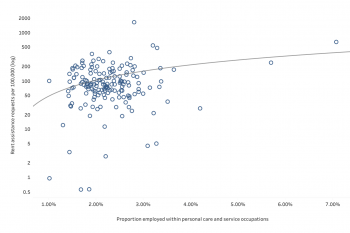
Rent assistance requests to 2-1-1 helplines since COVID are higher in cities with a larger proportion of workers in personal care and service occupations. As the percent of the workforce in personal care and service jobs increases, so too does the rate of requests for help paying rent.

Although low-poverty ZIP codes account for less than 5% of 2-1-1 requests for food assistance, they have risen faster and declined more slowly than calls from ZIP codes with much higher levels of poverty.
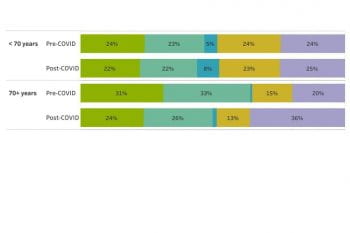
Since COVID-19, one in three requests to 2-1-1 from older adults is for food assistance. Before COVID, it was 1 in 5.
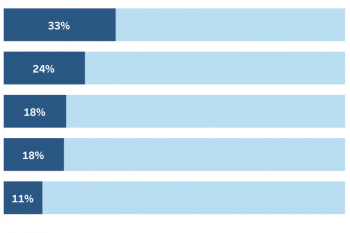
One third of Americans calling 2-1-1 from low-poverty ZIP codes are requesting COVID-19 information about exposure, infection, disease or testing. In sharp contrast, only 11% of 2-1-1 callers from high-poverty ZIP codes want COVID-19 information.

Americans calling 2-1-1 since COVID-19 are disproportionately women, but it varies a lot based on the caller’s needs. Nearly all requests (80-90%) for diapers and toilet paper, child care, and clothing and household items come from women.

The differences are small, but clear. Five weeks into the COVID-19 pandemic, the proportion of housing assistance requests to 2-1-1 helplines is increasing faster in low-poverty ZIP codes than high-poverty ZIP codes. This trend is worth watching, as it may indicate that more Americans living in wealthier neighborhoods are feeling the economic fallout of the […]
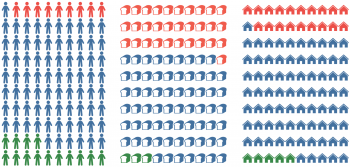
Last Sunday’s report, “High-poverty ZIP codes hurting most for food, rent during COVID-19,” was so popular that we recreated it including all 31 states for which 2-1-1 data are available. This is up from the original seven states, and we’ve also added four more days of data, through yesterday. In all, we analyzed over 150,000 […]
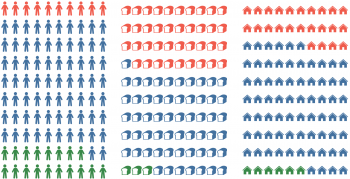
People living in high poverty ZIP codes make up 10% of the population but account for 39% of all requests for food assistance during COVID-19. They also account for a disproportionate share of requests for help with rent or mortgage payments. We examined over 50,000 requests for food, rent and mortgage assistance received by 2-1-1 […]